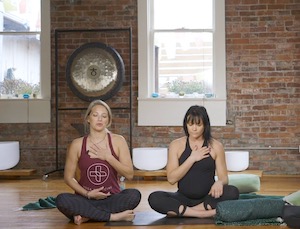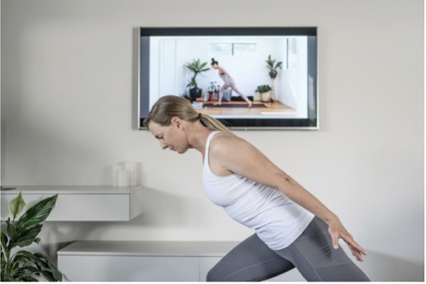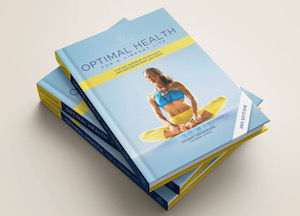Hip, Podcast, Rachel Land, Resources, Tiffany Cruikshank, Yoga Medicine® News
12: Hip Mobility, how much is enough?
Hip mobility is a hot topic on social media and in the movement world, seeming to generate strong opinions as to whether extreme range of motion is good or bad for us. So in today’s episode, Tiffany and Rachel unpack what is considered “normal” range of motion for the hip joint and its application in daily activities. They discuss the potential implications of significant limitations in hip mobility, as well as those of extreme mobility. They cover the difference between muscle tension and bony end range, and explore the roles of passive versus active range of motion.
Listen in to hear how gaining neurologic control of your mobility, and perhaps even losing some of your end range, could help you feel better in your body, and the value of viewing hip mobility not as an end goal, but through the context of how you would like your hips to function in a yoga context and beyond.
“If I can get away from this mindset that more is better and start to be okay with losing some of that range of motion, and focusing on strength…I’ve never felt better.” – Tiffany Cruikshank
YOU CAN SUBSCRIBE AND LISTEN TO THE PODCAST ON APPLE PODCASTS. AND BE SURE TO LEAVE US A RATING AND REVIEW!
“The things that come easily to you maybe aren’t the things you need to focus on.” – Tiffany Cruikshank
Show Notes:
- What is considered “normal” range of motion in hip flexion [3:15]
- Functional range of motion will differ for each of us [8:10]
- Implications of significant limitations in hip flexion [8:43]
- “Normal” range of motion in hip extension [11.02]
- The role of individual bony structure in range of motion [13:11]
- Hip extension in daily life, and implications of significant limitations in hip extension [13:51]
- Extreme hip range of motion after hip replacement [15:33]
- Hip abduction [16:45]
- Hip adduction [18:19]
- Stability is key for the IT band, the Yin & Yang of yoga and running [18:51]
- Hip external rotation [23:06]
- How our fascia adapts to repeated loading; implications for mobility [25:20]
- Hip internal rotation [28:01]
- Differentiating bony limitations from muscle tension at end range [29:06]
- Control over our mobility: passive versus active range of motion [31:13]
- Active range of motion and improved neurologic control, and the value of cross-training [35:14]
- Implications of big gaps between active and passive range [36:47]
- Can there be value in decreasing our passive range of motion? [40:42]
- Assessing hip mobility in the context of the demands of our individual lives [47:01]
- Suggestions from research on extremes in hip range of motion [53:50]
- Conclusions and take-away points [56:47]
Links Mentioned:
“What’s your intention? Shape your practice accordingly.” – Rachel Land



















